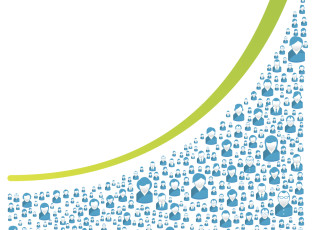Partnership Leverages Data to Improve Student Outcomes
By Reyna Gobel
August 22, 2014
Three-college collaboration harnesses the power of data to improve success of community college transfer students.
Students often view community college as a steppingstone to a four-year degree. Unfortunately, research shows that many transfer students never reach their academic goals.
To find out why, three Maryland colleges — Montgomery College (MC), Prince George’s Community College (PGCC) and University of Maryland University College (UMUC) — armed with funding from the Kresge Foundation, spent four years collecting and comparing student data.
What they did: In year one, UMUC administrators started by discussing data points with partner community colleges. In year two, UMUC brought in external evaluators, essentially faculty members from other colleges who had conducted similar projects. Administrators started by asking community colleges to contribute specific student data (age, course-taking habits, course completion rates, etc.). After each data set was analyzed, new discussions were had and more questions were asked. Then, more data was analyzed.
W. Allen Richman, interim dean of the office of planning, assessment and institutional research at PGCC, says the collaboration has opened a lot of eyes to what the right data can do for colleges.
“We used to send transcripts to four-year institutions with just the courses students needed to complete a degree and their grades,” Richman says. “Now, we share a student’s full academic details,” including whether a student has attempted to take a course, how many times a student has taken a course, and whether a student has taken a course online.
What they learned: While administrators didn’t go into the experiment with a set hypothesis, the results were enlighting. Denise Nadasen, associate vice president for institutional research at UMUC, found that students who enrolled in rigorous coursework — math, for example — fared better than students who enrolled in easier classes. “Taking on challenging courses is an indication of student grit — a characteristic that suggests that students can overcome challenges,” Nadasen says. “Subsequently, students who attempt a hard math class were more likely to succeed, perhaps because they take on and overcome challenges.”
How the data is being used: PGCC and MC are considering curriculum changes to better prepare students for transfer success. MC is developing a four-week course for students interested in transferring to UMUC.
Both PGCC and MC pair students with UMUC student mentors who have transferred from the respective community colleges. Mentors help students choose courses that increase their chances for success at the transfer college.
“It’s our job to promote student retention and student success,” says Kathleen Wessman, vice president for planning and institutional effectiveness at MC. “We have to look at what we’re failing at and improve in order to help our students succeed.”
Interested in collaborating with partner colleges to analyze student success? Richman offers these five tips:
- Have a frank, honest dialogue about any legal questions that might arise from sharing student data among partner colleges.
- Develop a plan for sending data securely.
- Decide which data points to study, and add new data points as needed.
- Use the data to consider changes to existing coursework.
- Define success. For example, is it how many students go on to earn four-year degrees at transfer colleges, or is it something else?
Is your college using student data to improve success? Tell us how in the Comments.









